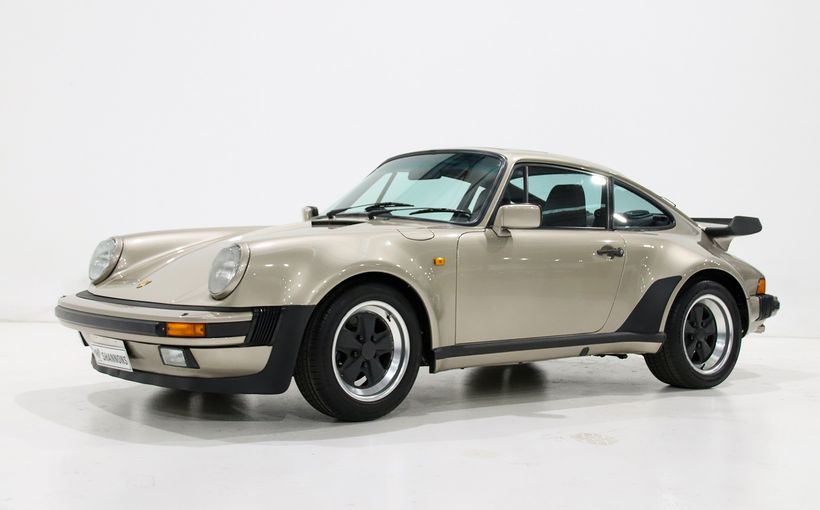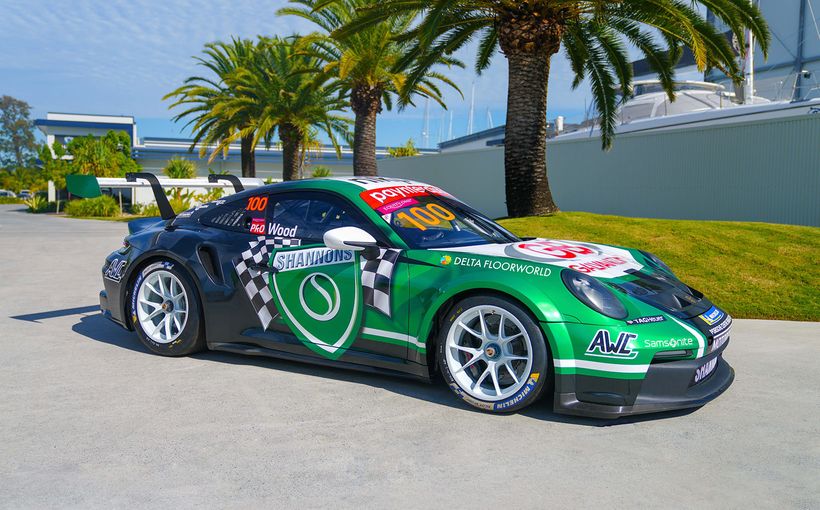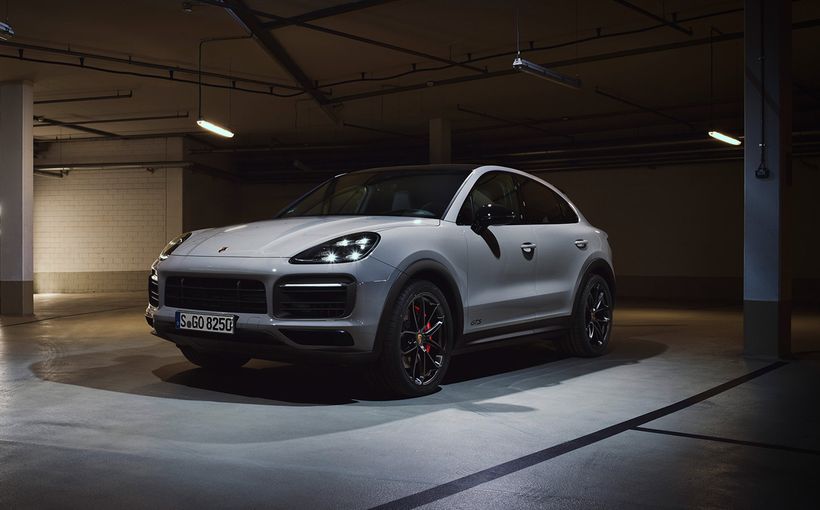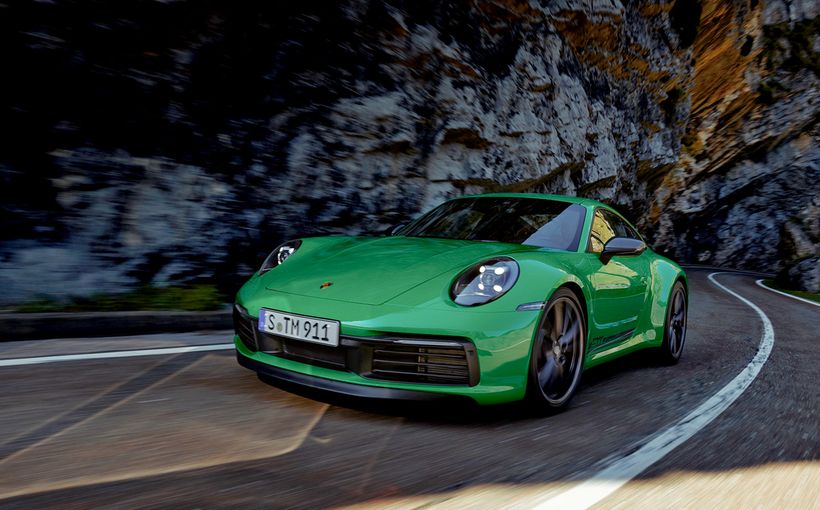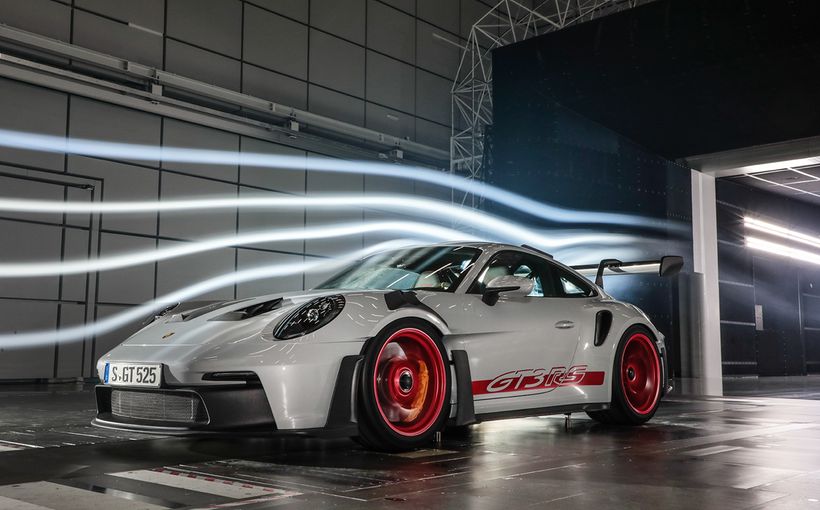Porsche 928: sublime V8 grand tourer that perplexed the purists

“Porsche has simply made a car which has always been an example of how a GT of the next generation should run, even greater. It is very beautiful, very fast, very safe, very versatile, with attractive lines and is never badly lived in, because it needs a connoisseur to appreciate its great qualities,” wrote Italian author Stefano Pasini in Porsche 928 GTS.
“Perhaps, more than the permanently small sales figures, Porsche will be more hurt by the extent to which some people have not been able to understand this extraordinary GT’s many qualities. It is the best in its sector. In very modest consolation, I can at least dedicate to them a quote from Thomas Boswell which might have been written just for the 928’s story: ‘Nothing is a substitute for excellence. Not even success.’”
The magnificent 928, produced by the famous German marque between 1977 and 1995, was snubbed by many Porsche purists during its 18-year production run of 61,000 units. To them, there was only one real Porsche. The 928, for all its brilliance, was the antithesis of the 911 and therefore not considered a worthy replacement of the icon, as originally planned.
For here was a car that redefined Porsche; a large, heavy and opulent grand tourer with a front-mounted, water-cooled V8 engine. Given the marque’s history of small, light and agile sports cars, with and without roofs, powered by air-cooled flat four or six-cylinder engines either rear or mid-mounted, this radical departure from Porsche orthodoxy was an affront to many.
Given the quarter-century evolution of the brand since then, with an expanded model range that includes large, heavy and opulent grand tourers with front-mounted, water-cooled V8s like the Panamera (and by extension the Cayenne), it could be argued that the innovative 928 was simply way ahead of its time. Its passionate and growing band of global enthusiasts would no doubt agree.
So, has the modern-day appreciation of this sublime GT, that could sit rock-steady at close to 300km/h on autobahns and consume continents with astounding ease, only been possible because of Porsche’s model expansion and embracement of front-engine V8 power since the 928’s demise? Or simply because the 928 did not succeed in replacing the iconic 911 as intended?

Image: en.wheelsage.org
Although it’s hard to fathom today, there was a period in the early 1970s when Porsche management under CEO Ernst Fuhrmann saw the 911 as nothing more than an expensive engineering orphan from a bygone era that was reaching the limits of its potential.
Fuhrmann believed Porsche’s future was front-engine GT cars with conventional water-cooled engines, as opposed to unconventional sports cars like the air-cooled rear-engine 911. The chairman envisaged blending the refinement and luxury of a prestige sedan with the power and handling of a sports car and, as a result, the end of the 911.
Hindsight is a wonderful thing of course and often (unfairly) used to judge those who have made pivotal decisions without the benefit of such unattainable wisdom at the time. In this context, it’s easy to condemn Fuhrmann for his jaundiced view of the company’s unique flagship.
However, it’s also important to understand why he didn’t see a future for the 911 given the existential threats to sports car ownership taking place in the US – Porsche’s largest and most important market – at that time.
Following the 1965 publication of consumer crusader Ralph Nader’s book Unsafe at Any Speed, which provided a stinging criticism of the US car industry’s poor safety standards (in particular GM’s Chevrolet Corvair), the US Congress unanimously enacted the National Traffic and Motor Vehicle Safety Act in 1966.
This gave the federal government unprecedented powers in mandating minimum vehicle and highway safety standards and by the early 1970s the legislators appeared to have sports cars in their crosshairs, particularly the 911 with its air-cooled rear-mounted flat six and swing-axle suspension reminiscent of the recently axed Corvair.

Image: en.wheelsage.org
Imminent changes were on the horizon, including much tougher laws regarding occupant protection in rear-end collisions which a rear-engine car could not have passed. This would have ensured the end of 911 sales in the US and, with that huge loss of volume, the end of 911 production.
Porsche was not alone in reacting with radical changes to its product planning, as numerous US and foreign manufacturers were equally threatened by proposed increases in roll-over protection that would have banned all open-top cars by 1975.
Such draconian legislation never became law, disappearing into the opacity of US politics (perhaps too many congressmen and women owned 911s). Even so, it hung like a guillotine blade over Porsche’s head when these product decisions were being made, which is perhaps why Fuhrmann envisaged closed coupes with front engines as the marque’s only viable future.
The addition of the polarising 924 (an abandoned project between VW and Audi) to the Porsche line-up in 1976, a year before the launch of the 928, displayed Fuhrmann’s thinking as the first born in a new family of conventional front-engine coupes.
If the four-cylinder 924 was the new entry point to Porsche ownership, then the proposed V8 version would replace the 911 as the premium-priced flagship, with appeal to American tastes of prime importance.

Image: Porsche
Porsche 928 (1977-1979)
Although the 928’s initial design and development had reached working prototype stage by 1973, the Arab-Israeli war triggered the world’s first energy crisis and a global sales plunge for large and thirsty cars. This postponed the 928’s launch by several years.
During the early design stage, mid-engine and front-engine drivetrains were assessed but the latter was realistically the only option, given Fuhrmann’s vision for a 2+2 which placed a premium on passenger and luggage space that only a front-engine design could deliver.
It was large and imposing as all grand tourers should be, set on a 2540mm wheelbase with an overall length of just under 4.5 metres and width of more than 1.8 metres. Yet it was barely 1.3 metres tall, or about 53 inches on the old scale.
The muscular yet elegant low-slung styling from a team of artists headed by Anatole Lapine was a masterclass in then-futuristic yet timeless design. It looks just as fresh and aerodynamically efficient today as it did decades ago, even though its initial drag coefficient was a less than stellar 0.41.
The design and function of the pop-up headlights was inspired by the Lamborghini Miura and the wide triangular side windows eliminated the rear visibility problems that cursed many exotic GTs.
16 x 7-inch alloy wheels fitted to manual versions (autos had 15s) featured a distinctive five-hole pattern described as ‘telephone dial’ wheels. Think of how long it’s been since phones had circular dials, or indeed when phones were called telephones, and you start to realise just how long the 928 has been with us!

Image: Porsche
The thick, hexagonal-shaped doors appeared to be more like hatches on a space-ship, consistent with its futuristic style. Each door’s rear edges, with two oblique lines that converged at the waistline, were equally form and function; extending the centre of the door rearward also made for easier entry and exit, particularly for those seated in the rear stalls.
Another 928 signature was the apparent absence of front or rear bumpers, which were incorporated in smooth nose and tail sections formed from tough polyurethane which could resist deformation in low-speed impacts. This was a clever way of avoiding the ugly bumpers mandated in the US from 1973 to withstand low speed impacts up to 5mph (8km/h).
Numerous engine designs were considered, including a V10. However, a water-cooled 90-degree all-aluminium V8 (engine code M28) was chosen not only for its relative light weight and compact dimensions; its multi-cylinder design with cross-plane crankshaft and robust four-bolt mains was also inherently well balanced to minimise vibration and its water-cooling eliminated noise and thermal issues often associated with air-cooled engines.
Like the 928, Porsche’s first water-cooled series production V8 was designed from scratch, with an oversquare 95mm bore and 78.9mm stroke displacing 4474cc. Each head featured a single overhead camshaft and two valves per cylinder, with the valves canted either side of central spark plugs to create crossflow hemi-shaped combustion chambers with an 8.5:1 compression ratio.
The cylinder block, with its relatively large 122mm bore spacings, was made from silicon alloy with diamond-hard Nikasil cylinder walls that dispensed with conventional steel sleeve inserts. Fed by Bosch K-Jetronic mechanical fuel injection, the 4.5 litre V8 produced 177kW (240bhp) at 5500rpm and 363Nm (268ft/lbs) at 3600rpm with average combined fuel consumption of 13.2L/100km.
Another key design requirement was that weight distribution had to be optimised to ensure a neutral chassis balance and vigorous handling, that would belie the size and weight of the 928 to reward keen drivers, in direct contrast to the quirky tail-happy characteristics of the 911.

Image: Porsche
To achieve this, the V8 was mounted as far rearward as possible and the transmission, either a five-speed manual or three-speed automatic (more than 80 per cent of all 928s were autos), was located immediately ahead of the differential. This trans-axle design resulted in a near-perfect 51:49 weight distribution which was also superior to the 911.
The 928’s immensely strong unitary body-chassis design, with power ventilated disc brakes at each corner, was what one would expect from Porsche. The front suspension, with its coil springs and anti-roll bar, featured upper and lower wishbones made from aluminium alloy to minimise unsprung weight.
The independent, self-levelling, coil-spring rear had upper transverse links, lower trailing arms and an anti-roll bar. It also incorporated what Porsche called the ‘Weissach Axle’ with geometry that provided rear-wheel steering that increased the amount of toe-in during cornering to reduce the risk of oversteer.
True to its GT design brief, there was also a sizeable luggage area accessed through a large hatchback. Although it qualified as a 2+2, the heavily bolstered rear seats were narrow due to the wide transmission tunnel with negligible leg room for adults. The backrests could also be folded flat to enlarge the luggage area.
There were no such compromises for driver and front passenger, with ample leg room, sumptuous and supportive seating (with some typically garish 1970s fabric seat inserts at first) and plenty of electric adjustment. The wheel was not only height-adjustable but the entire instrument module moved with the steering column to ensure optimum driver visibility at any height. There was even an optional air-conditioned glovebox.

Image: Porsche
Despite weight-saving measures, with extensive use of aluminium including several body panels, the 928’s inherent strength and luxury ensured a hefty kerb weight of 1450kg, which was unprecedented for a Porsche and destined to increase with each evolution. Even so, handling and ride were sublime if a little harsh on bumpy surfaces. The lusty 4.5 litre V8 could do 0-100km/h in 7.0 seconds, 0-160km/h in 17.8 and reach 225km/h (140mph).
The 928 debuted at the 1977 Geneva Motor Show, before going on sale later that year. It won immediate acclaim from the motoring press, winning the prestigious 1978 European Car of the Year award, which was significant in being the first ‘sports car’ to win an award usually reserved for mainstream sedans.
However, that was also not a good omen for the 928 in winning over Porsche purists, because it consolidated their perceptions of it being too big, heavy and luxurious to be a worthy replacement of the 911.
Its base pricing was also considerably higher than the top-shelf 911. And despite its positive reception by the media, with US road testers particularly enamoured by the 928’s smooth abilities, sales were stubbornly slow, much to Fuhrmann’s lament.

Image: en.wheelsage.org
928S (1979-1986)
Stung by lacklustre sales and criticism that it wasn’t sporty enough, the company responded with an upgraded version called the 928S. The most noticeable change was the addition of front and rear spoilers, resulting in improved high-speed stability and a useful drop in drag coefficient from 0.41 to 0.38. From 1983 the ‘phone dial’ wheels were replaced with 16 x 7-inch flat disc alloys.
With a larger 97mm bore, the engine capacity increased to 4.7 litres (4664cc) along with a higher 10:1 compression ratio. Power output jumped to 221kW (300bhp) at 5900rpm and torque climbed to 385Nm (284 ft/lbs) at 4500rpm, which gave the 928 the extra punch customers demanded.
Despite a 90kg increase in kerb weight to 1540kg, the more powerful 928S shaved a sizeable 0.8 secs from its 0-100km/h sprint time to 6.2 secs, with 0-160km/h dropping to 14.8 and top speed increasing to 250km/h (156mph).
By 1980, though, Porsche was in trouble. It was losing money for the first time in its history, due to the combined effects of slowing 911 sales in the US (where warranty claims were also increasing) and lukewarm buyer enthusiasm for its 924 and 928 models.

Image: Porsche
Ernst Fuhrmann was replaced by an American, Peter Schutz, in 1981 who made rapid and significant changes. Freed of the early 1970s legislative threat to the 911 which had burdened his predecessor, Schutz was resolute in ensuring the survival of what he saw as the quintessential Porsche.
In an early meeting with Porsche management at head office, Schutz noticed a wall chart which line-graphed future model development of the 924, 928 and 911. The line for the 911 ended at 1981, so Schutz picked up a marker, extended the 911 line off the end of the chart and onto the wall! He declared that for as long as he was in charge, the 911 would remain the flagship.
This decision boosted flagging morale across the company and triggered immediate quality control and performance improvements in the 911, after development had stalled due to its impending demise. It also created a logical and cohesive model line-up which offered buyers a choice of entry-level four cylinder 924, mid-priced six cylinder sporty 911 and premium-priced eight cylinder 928. Under Schutz’s tenure sales soared in the 1980s, not only in the US but globally.
In late 1983 the Series 2 appeared. Officially it was called the 928S Series 2 but the abbreviated 928 S2 name was used in UK marketing and tended to catch on elsewhere. There was a 10bhp increase to 310bhp (231kW) with adoption of electronic ignition and the latest Bosch LH Jetronic electronic fuel injection. The S2 also pioneered ABS for Porsche and the original three-speed automatic was replaced with a four-speed unit. Top speed was now nudging 256km/h (160mph).
A heavily revised S2 released exclusively for the US market in 1985 was a portent of things to come for global markets. Although not referred to as Series 3 or S3, its enlarged 5.0 litre engine with more efficient DOHC four-valve heads was designed to meet stricter US emission regulations (particularly in California) without hampering performance.

Image: Porsche
928 S4 (1986-1989)
The Series 4 or S4 (the rare manual version was S4 SE) represented the most significant 928 upgrade since its launch a decade before. It was also successful, with sales returning to those of the original 928 despite the S4’s inflated price. Most S4 customers chose the four-speed automatic option.
There were smoother polyurethane front and rear bumpers with revised tail lights and the previous three-piece rear spoiler was replaced with a more prominent hatchback-mounted aerofoil, which combined lowered the drag coefficient from 0.38 to 0.34 with enhanced high-speed stability.
Its interior was more luxurious too, rich with leather and increased power adjustment including seat and mirror memory settings.


The S4’s larger 100mm bore delivered a formidable 4957cc displacement and there were exquisite new DOHC heads with four valves per cylinder. The S4 differed from the US-only S3 with larger valves, more aggressive camshaft profiles and a two-stage variable-length intake manifold, with outputs rising to 239kW (320bhp) at 6000rpm and 420Nm (317ft/lbs) at 3000rpm.
There were also big Brembo front brakes, standard ABS, wider 16 x 8 rear wheels and fatter 245/45 tyres in keeping with this performance increase. The only negative was a 40kg increase in kerb weight to a portly 1580kg but performance took a major step up, with 0-100km/h slashed by 0.7 secs to 5.5, more than one second lopped from its 0-160km/h time to 13.7 and terminal speed rising to 270km/h (167mph).
If a 928 buyer was not dissuaded by the S4’s substantial price increase, they also would not have blinked at its official combined fuel consumption average, which had climbed to a voracious 19.6L/100km. Imagine how quickly that could have emptied the 86-litre tank if held wide-open on an autobahn!

Image: en.wheelsage.org
928 GT (1989-1992)
Positive customer response to the S4’s booster shot prompted Porsche to go harder, ensuring that the 928 continued to grow old disgracefully with the release of the manual-only 928 GT.
Numerous enhancements included the widest rear wheels fitted to a 928 - 16 x 9s in both Club Sport and later Design 90 styles - which with stiffer sports suspension provided sharper handling at the expense of a slightly harsher ride.
The 5.0-litre V8 also got hotter camshaft profiles, a modified ECU and twin tailpipe exhaust system. Power increased again by 10bhp to 330bhp (246kW) tapped at a slightly higher 6200rpm, which emphasised the 928 GT’s sublime grand touring abilities.
“Once past 4000rpm the difference is plain,” wrote Stuart Gallagher in The Ultimate History of Porsche. “It is unbelievably, stupendously fast – but not in a wild, uncontrollable way, rather a quiet but bullet-fast progression. It will pull happily in fifth from 500 to 6750rpm with barely a bark and one can easily forget to check the speedometer while marvelling at its grace.”

Image: en.wheelsage.org
928 GTS (1992-1995)
The GTS was the final evolution due to unsustainable sales (less than one thousand units were built in its final year) caused by a combination of its eye-watering price and formidable competition from Mercedes-Benz, BMW and others. Even so, significant enhancements ensured the last 928 left only fond memories for its small but passionate customer base.
The magnificent quad-cam V8 was given its final displacement increase to 5397cc, this time with a longer stroke, resulting in definitive outputs of 261kW (350bhp) at 5700rpm and 491Nm (362 ft/lbs) at 4250rpm. The longer stroke contributed to that useful torque boost and supreme flexibility, in a highly developed engine which had also reached its zenith in refinement.
There were also bigger brakes inside larger 17-inch Cup-style alloys, with the widest-ever 255/40 rear tyres and a rear track increase requiring flared rear wheel arches unique to the GTS. Those beautiful bulges, along with the new wheels and a body-coloured rear wing, were the main visual differences between the GTS and S4.
Extra cabin sound-proofing also made the final 928 the quietest and contributed to its unprecedented 1620kg kerb weight, but it was still a tad quicker than the GT in lowering the 0-100km/h sprint to 5.4 secs. 0-160km/h was also lowered to a peerless 13.2 secs on its way to a scintillating top speed of 170mph (272km/h).

Image: en.wheelsage.org
After 18 years of continuous development, the 928 had evolved into a devastating grand tourer. Pasini provides some excellent insights on 928 GTS ownership:
“You arrive at the (autobahn) toll, floor your right foot and soon afterwards the speedo needle is fluttering at the end of its sector or almost (to tell the truth it does not quite reach 300km/h). 275km/h – easily, cleanly, no fuss, with straight-line stability worthy of an arrow and brakes which rise powerfully up at speed to curb the launched colossus.
“The V8 is always great. It starts up with the noise of a big aeroplane, steadies to idling and from that moment on you practically never hear it. Well, almost. Every now and then, of course, one is made aware of its deep breaths, when pressing on, but it is always very careful not to get inside the driver’s head: whilst cruising from Frankfurt to Berlin at 235km/h he may well be closing a telephone deal worth zillions of DM, and not want to be troubled by fans and pistons.
“But where the GTS improves one of the 928’s most successful features, is in the driver’s subjective perception of the mass he is driving. It may seem absurd but a regular driver of this car knows it well: at top speeds, in fact, every bit of the 928 GTS’s mass can be felt, helping the suspensions to level out the irregularities on the road surface which would otherwise be annoying, providing increased stability and reassurance. The feeling of solid-as-a-strongbox which the GTS gives is delightful, encouraging.
“If, on the other hand, you take one of those classic, winding, hill roads, the GTS shrinks usefully. The agility of this voluminous car along country lanes, some of them narrow, is always a surprise. No GT of this size (and I am talking here about the highest levels, Aston Martin Virage, Jaguar XJ-S 6.0 litre etc) has the same ease and effectiveness in the narrow.”

Image: Porsche
So, we are left to ponder the rise and fall of this remarkable GT, which despite its attributes never gained acceptance by many purists as a ‘real’ Porsche during its 18 years in production. So, do those same 911 worshippers consider today’s front-engine, water-cooled V8 Panamera grand tourer, which the 928 pioneered, also not a real Porsche?
Perhaps history would have been kinder to the 928 if, like the Panamera, it had been conceived and launched as a companion to the iconic 911 rather than as a replacement for it. The belated but growing appreciation of the 928 by today’s collectors, with a desire to own both a 911 and a 928, suggests that could well have been the case.



